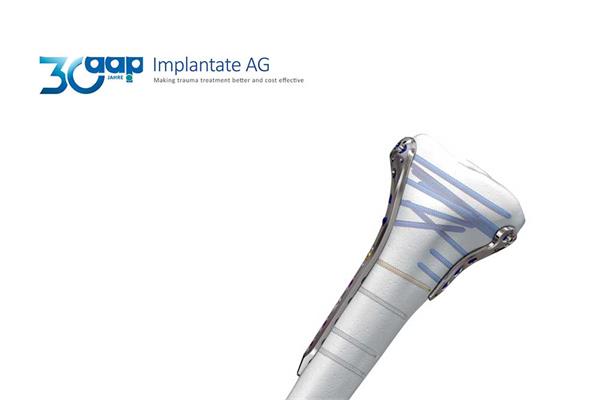
aap Implantate AG announced the beginning of the human clinical study for its antibacterial silver coating technology for application on anatomical plates and screws for fracture treatment.
aap announced the launch of the world's first human clinical study for antibacterial silver coating technology on anatomical plates and screws for fracture treatment. The University Hospital in Regensburg is the first trial center which was equipped with the study materials and trained to perform surgeries with aap's silver coated implants.
This achievement, which represents another milestone on the way to get CE approval, makes aap the first company to test an antibacterial silver coating on anatomical plates and screws for fracture treatment as part of a study of this kind.
The aim of the study
With its antibacterial silver coating technology, aap aims at solving one of the greatest challenges in traumatology: the reduction of surgical site infections (SSI), which represent a major burden both for the patients concerned and for global healthcare systems.
One of the causes of SSI is antibiotic-resistant bacteria. In its annual report on the state of research to overcome antibiotic resistance, the WHO recently found that some of the world's most dangerous bacteria have developed resistance to known drugs[1]. Moreover, according to the WHO, almost all antibiotics currently in development work little better than existing drugs.
aap's antibacterial silver coating technology represents an alternative solution in the fight against bacterial infections that is not based on antibiotics and therefore offers enormous market potential. As a platform technology, the technology has a broad range of applications and can be used not only in traumatology but also in other areas of orthopaedics as well as in cardiology, dentistry, or medical instruments.
[1] 2020 Antibacterial agents in clinical and preclinical development: an overview and analysis. Geneva: World Health Organization; 2021.